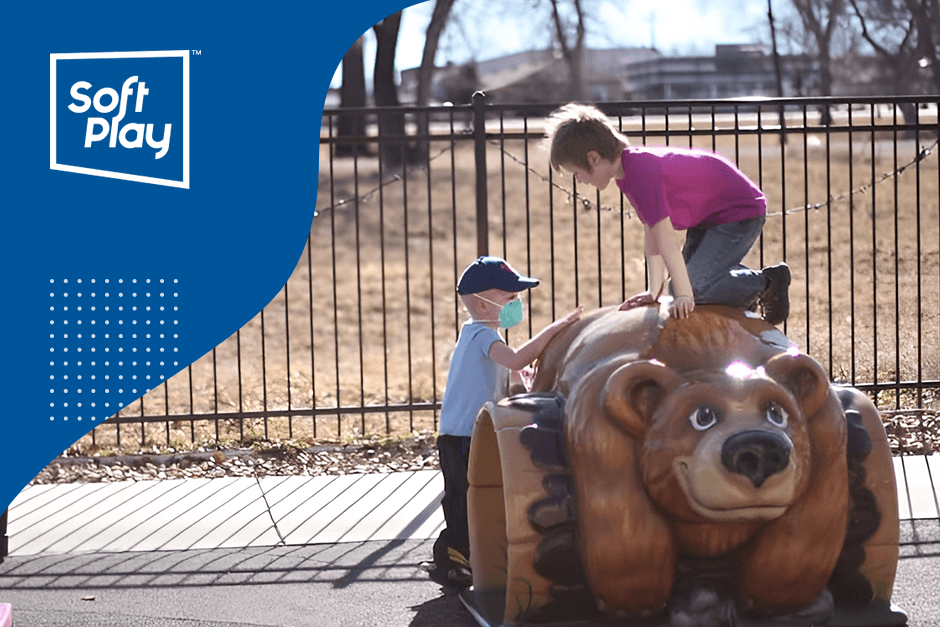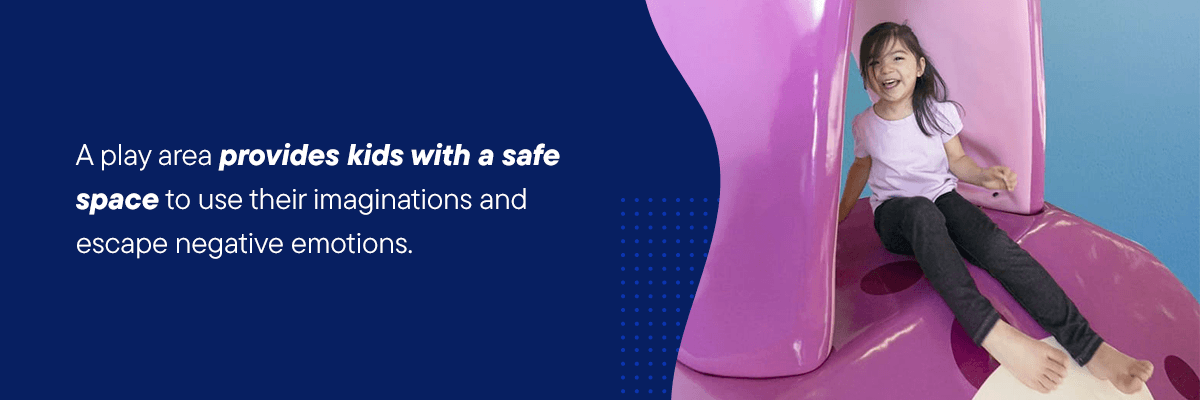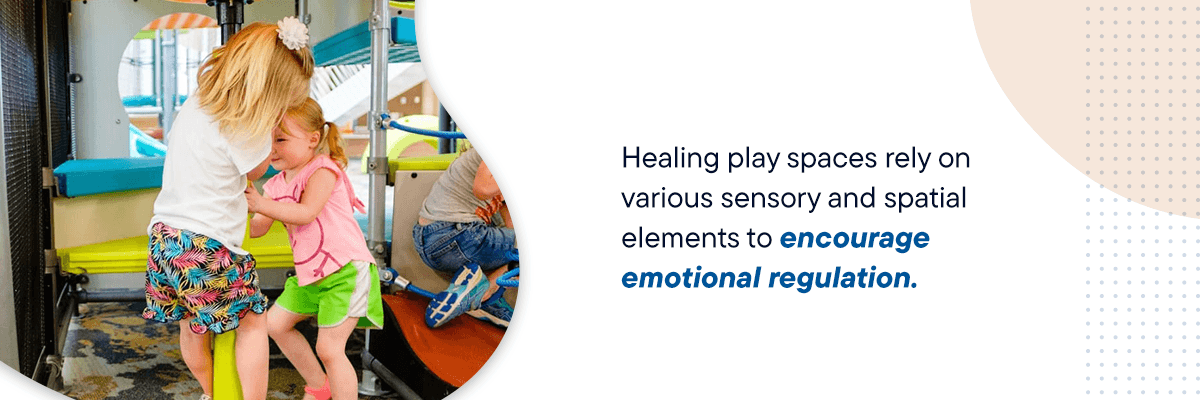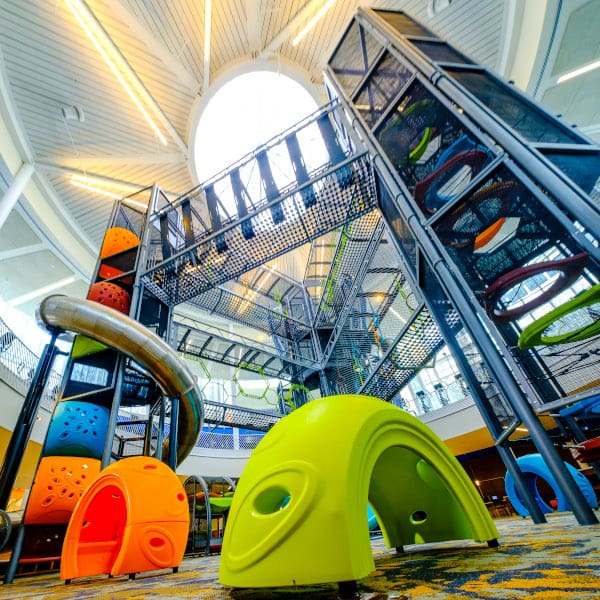Building Support and Budget for a Healing Play Area: A Guide for Children’s Hospitals

Building Support and Budget for a Healing Play Area: A Guide for Children’s Hospitals
Designing a healing play area for a pediatric hospital is an excellent way to build a family-centered reputation and offer a positive experience for patients. A project like this involves considerable planning, support and money. The good news is if you learn how to create awareness and drum up funding, you can get things rolling quickly.
Why Are Play Areas Important in Pediatric Hospitals?
Play is essential to kids’ physical, emotional, social and cognitive development. It allows them to be creative while exercising their dexterity and imagination. While playing, kids learn about themselves and how to interact with the world. They also learn vital skills like confidence, resilience and independence. Play areas in pediatric hospitals offer these benefits:
- Emotional and psychological relief during treatment: A play area provides kids with a safe space to use their imaginations and escape negative emotions. Therapeutic play improves their overall well-being, reducing stress and anxiety and helping them manage pain.
- Physical rehabilitation: Play encourages physical activity that promotes muscle, joint and skin development. An inclusive play area allows kids who have experienced physical trauma to rehabilitate their injuries in a comfortable and fun way. It can improve their motor skills, physical strength, endurance and bodily awareness.
- Welcoming and comforting environment: Kids may view hospitals as lonely, unfamiliar and even scary environments. They may worry they’ll experience illness or pain when they’re there. Play areas can help alleviate some of these concerns, showing them the environment offers comfort and joy.
- Strengthening family bonds: Play areas encourage family members to play with the patient, providing bonding opportunities. Families will feel more at ease knowing the hospital prioritizes kids’ mental and physical health by offering play areas.

Strategies to Gain Support for Your Play Area Project
Kids’ well-being is at the forefront of pediatric healthcare. Building support may be challenging, but it’s vital to providing them with a space to escape and recuperate. Here are six tips to gain hospital playground funding and support from administration, medical staff and families:
- Build a strong case for investment: Become an expert on play and present the benefits of play areas for patients and the community. Learn how they help patients, their families and the hospitals. Being knowledgeable enables you to easily communicate their importance and convince potential stakeholders. You can also find similar projects and report their success stories and data to highlight their potential.
- Engage stakeholders: To accomplish your goal, involve like-minded people and the community. Build relationships with parents, special interest groups, and educators who can advocate for a hospital play area. Include hospital staff and admin in the planning and implementation process to secure buy-in.
- Implement effective communication strategies: Host educational community events and launch social media campaigns to grow awareness and get people’s opinions. Include activities, infographics and interactive elements to highlight the benefits of play.
- Host fundraisers: Create a fundraising strategy that involves using different initiatives to encourage potential donors to donate. Consider charity events, crowdfunding campaigns and sponsorship drives.
- Celebrate milestones: As you plan, gain support and raise funds, celebrate milestones to show appreciation to supporters, donors and volunteers. Get local news coverage, plan community events and post shoutouts on social media. This will boost morale and garner more community involvement.
- Create a budget: To get hospital play area funding, you must provide potential investors with a plan detailing the expected costs of the project. This plan should cover all the different elements the playground will need, from equipment to maintenance. Donors want to know what you’re spending their money on.
Budget Planning Tips for Building a Play Area
Creating a play area in a hospital requires strategic thinking and careful planning. Developing a clear budget is the best way to organize your funds and maximize their use, satisfying investors and patients. Follow these tips to create an adequate budget.
Estimate Your Project’s Costs
Constructing a hospital play area can be an expensive undertaking. You need to consider many costs to ensure you get enough funding to complete it. Here are the key expenses to identify:
- Playground equipment and accessories: To accommodate kids of different ages and abilities, include various types of equipment and accessories. Specific items, like swings with transfer decks and embankment slides, must be included to ensure the play area is accessible and inclusive. The price of these features may vary, but high quality is essential to provide longevity and sustainability. Estimate how many kids will use the playground daily, and aim to budget about $1,000 per kid.
- Accessible surfacing: Soft yet traversable surfacing is key to designing inclusive and accessible play areas. Using the right surfacing also reduces maintenance costs and the risk of injury.
- Accessibility features: Your budget will also have to include ramps, wide routes and handrails. You may also need to account for potential inspection costs.
- Shipping: Once you have a clear picture of the equipment you want, consider transportation costs to get it to the hospital. Ask about shipping costs and include them in your budget.
- Installation: Your budget should also include labor costs associated with preparing the space, moving equipment and installing it.
- Maintenance: Maintaining the equipment and surrounding area is an ongoing expense you must account for in your budget. Certain items may need repairs or repainting to keep them appealing and operational.
Explore Funding Options
As you plan your budget, your expenses may exceed what the hospital can afford. To achieve your goal despite limited funding, approach investors and donors to support your project. Creating awareness and building relationships can help you find people and organizations to donate and volunteer.
Engaging with hospital stakeholders could help expand the hospital’s budget. However, you may still need to approach people, businesses and government officials in your community for donations and support. Connect with local government bodies, corporations and nonprofit organizations for funding opportunities, research grants and hospital playground grants you can apply for.
Parents and educators are essential resources who can assist with fundraising efforts, such as ideas for events to raise money and awareness. Creating partnerships with businesses or reaching out to people with a history of donating can also help you secure funding. To make it more worthwhile, consider honoring them through commemorative branding, benches or plaques.
Maximize Resources
If your budget is limited and fundraising is slow, you may need to look at creative ways to maximize the resources you have. Here are some tips to reduce project costs:
- Choose multifunctional equipment: Consider play equipment that serves multiple purposes, such as quiet zones with soft seating for kids with autism or those who just want a breather from the excitement.
- Consult the community: Reach out to community members to help you connect with potential donors and supporters.
- Build in phases: This approach allows you to accommodate your budget while building and gives you time to secure more funding. It allows you to create a usable structure to add to as your budget grows.
- Consult professionals: Working with professionals in custom play solutions can help your project exceed safety and accessibility standards and maximize your space and budget.
- Care for the play area: Maintaining your play area is crucial to ensuring its longevity and sustainability. It also reduces long-term costs — repairing something small is often more affordable than replacing the whole item.
Key Elements of a Healing Play Space
Healing play spaces rely on various sensory and spatial elements to encourage emotional regulation. Creating these areas in pediatric hospitals involves incorporating stimuli like nature, colors and interactive activities to keep kids engaged.

Adhering to hospital safety standards and making play spaces inclusive and accessible is also crucial for pediatric patients of different ages and abilities to enjoy them. Here are the key areas to focus on.
Designing for Safety and Accessibility
Patients at pediatric hospitals include kids of various ages and abilities, so it’s important to consider their safety, accessibility and inclusion when designing play areas. That means focusing on surfacing, equipment and mobility.
The Americans with Disabilities Act (ADA) outlines the importance of surfacing that’s soft enough to cushion falls while still enabling mobility. Different materials offer certain advantages for safety and accessibility. Rubber mats and tiles are ideal for pediatric hospitals as they act as shock absorbers, are easy to clean and are simple for wheelchairs and walkers to traverse.
Equipment must be suitable for the age and developmental stage of the kids in the hospital. To ensure it’s accessible and inclusive, provide equipment that accommodates these age groups:
- Toddlers (1 to 3 years): Avoid tall and complex equipment. Instead, aim for short embankment slides, low platforms with ramps and straightforward climbing frames.
- Preschoolers (3 to 5 years): Provide swings with seating and lying options, embankment slides and interactive elements to accommodate their more adventurous spirits.
- School-age kids (over 5 years): Incorporate more advanced swings with transfer decks, larger climbing frames and monkey bars to accommodate their need for more challenging play.
Accessibility also aims to enable mobility for kids with physical disabilities. That means making it easy to navigate through the play area and to equipment. Providing unitary surfaces, flush transitions and wide routes makes traversing, transferring and passing easy for kids in wheelchairs.
Incorporating Therapeutic Play Features
Therapeutic play features are a popular addition to hospital play areas. They aid in kids’ strength-building, emotional regulation, self-expression, and recovery from illness and injuries. These elements are just as essential for kids with social, literacy, mobility and coordination challenges.
Here are the best therapeutic play features to ensure kids of different abilities can move their bodies and feel happier and calmer:
- Slides: Slides promote physical strength, enhance vestibular skills and help improve communication skills. They’re fun for all kids and may improve mood.
- Swings: Swings improve physical strength and control, coordination and balance. They also help ease sensory overload in kids with autism.
- Foam pit: Getting in and out of foam pits improves physical strength and coordination. The sensory experience they offer can also help soothe or excite kids.
- Soft-sculpted foam: These play features foster kids’ imagination and creativity, allowing them to enjoy soft and squishy versions of lifelike structures.
- Mats: Kids with mental and physical disabilities can improve their strength, coordination and fine motor skills by practicing different movements on a mat. Mats also provide sensory stimulation that may bring a sense of calm.

Creating a Visually Engaging Space
Visual stimulation can make a space more engaging and calming for kids. Using different colors and themes can encourage specific behaviors and make an area feel a certain way. Here are some ways colors can influence emotions in kids:
- Red: Conveys passion or excitement, making kids feel energized.
- Yellow: Commonly associated with kindness and happiness, encouraging focus and optimism.
- Orange: Invokes a warm feeling and promotes confidence.
- Blue: Calms kids, reducing anxiety and making them feel peaceful.
- Green: Promotes safety, tranquility and positivity, making kids feel grounded.
Themed play areas influence and educate kids, helping them make connections with the real world. They can teach spatial awareness and association while encouraging creativity and imagination.
Engaging with different themes inspires role-playing, active learning and confidence. For example, a nature-themed playground can teach kids about the outdoors and connect them to it.
Finding the Right Partner for Your Play Area
You’ll need a playground equipment partner to support your endeavor. Start with companies that have experience building playgrounds in health care settings. They’ll likely have a better understanding of the importance of play spaces and the benefits they offer kids.
Another trait to look for in a partner is experience in creating accessible and inclusive play structures. A business that can accommodate these needs or customize playgrounds and equipment to meet them is ideal. Look for a partner that can create a play area you can consider an investment in your hospital.
Build Imaginative Hospital Play Areas With Soft Play®
Soft Play is the leading provider of contained playgrounds. We have over 40 years of experience building inclusive and accessible play areas in various industries, including health care. Our portfolio features over 40,000 playgrounds across more than 60 countries for numerous types of organizations and businesses.
We provide entertaining and customizable play equipment, allowing you to work within your budget and available space. Our United States play areas are also ADA-compliant. Contact us today and partner with a company that can bring your play area vision to life.
